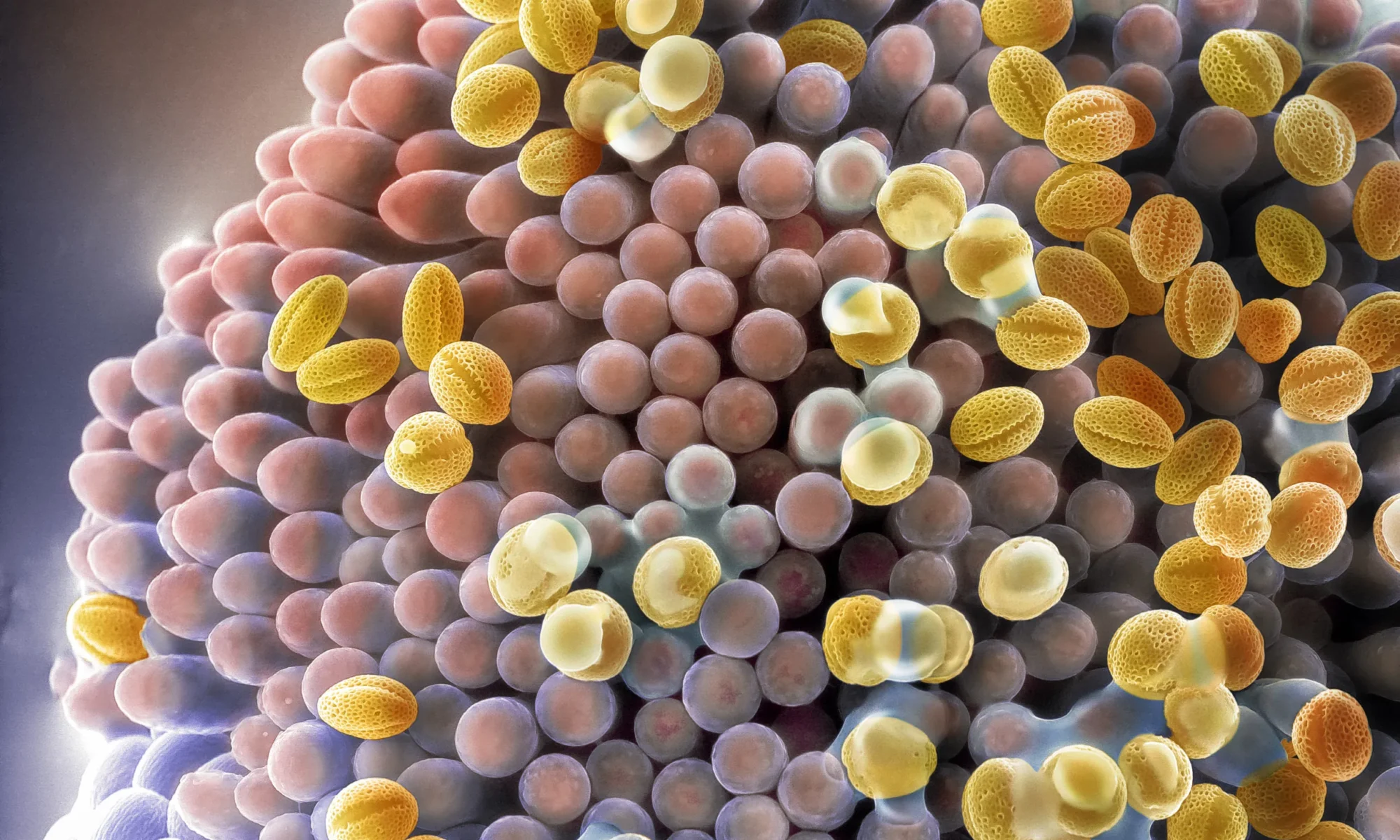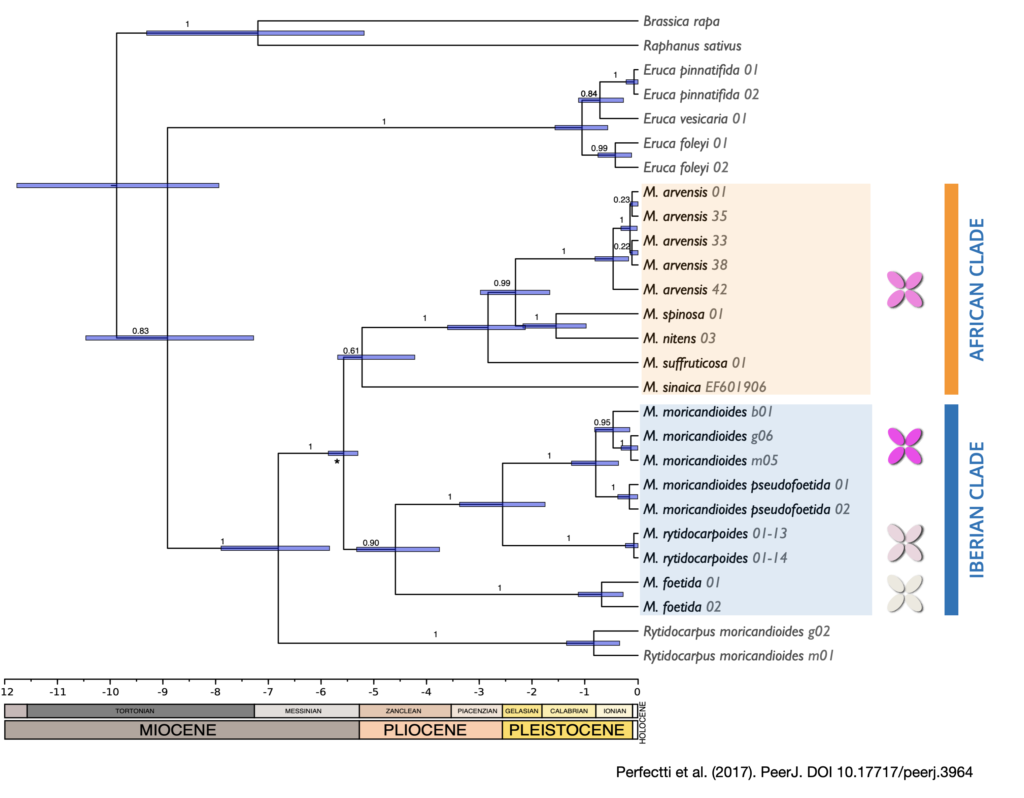This photo is an electronic photomicrograph with false color (which seeks to differentiate the most important parts of the images, making them more understandable) of the detail of the wet stigma of the summer flower of the plant Moricandia arvensis.

The image “Surviving by drops” has won third prize in the “Beyond our eyes” category, awarded by the International Union of Pure and Applied Physics (IUPAP) in its scientific image contest. This photograph is the work of Isabel Sánchez Almazo, Lola Molina – two scientists from the Center for Scientific Instrumentation (CIC) of the University of Granada – and José María Gómez Reyes, research professor at the Experimental Station of Arid Zones (EEZA) of the CSIC. The contest aims to portray the beauty of physical processes and the impact of physics in our daily lives, as well as to illustrate how physics research and teaching is carried out around the world.
The image was acquired with an environmental scanning electron microscope (ESEM) from CIC. The ESEM is capable of providing high-resolution electron images of hydrated samples in their natural state, without pre-observation treatments; it also allows in situ dynamic experiments of water condensation and dehydration. “This is achieved by cooling the sample surface and varying the partial pressure of water vapor inside the ESEM chamber, a process similar to the formation of dewdrops at dawn (known as dew point),” explains the research team.
The IUPAP award-winning image shows stigma papillae (pink) and pollen grains (orange) moist and with water droplets condensed on them. The photomicrograph was acquired with relative humidity close to 100% (at 2°C and 706.61 pascals water vapor pressure). Moricandia arvensis changes flower shape and color during summer, the driest season; these changes could be related to water stress, among other factors. The ability of some plant surfaces to generate droplets and retain some water, even under conditions of low water availability, is of particular interest for those that survive in arid or semi-arid regions. Micrometer-scale studies of hydrophobicity of natural and synthetic surfaces are possible with ESEM.
More info: CANAL UGR



